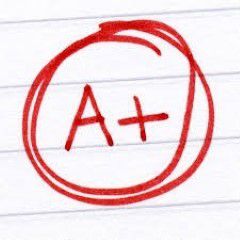MATH302 QUIZ 3 Complete Solution
Question 1 of 20
1.0 Points
Accepted characters: numbers, decimal point markers (period or comma), sign indicators (-), spaces (e.g., as thousands separator, 5 000), "E" or "e" (used in scientific notation). NOTE: For scientific notation, a period MUST be used as the decimal point marker.
Complex numbers should be in the form (a + bi) where "a" and "b" need to have explicitly stated values.
For example: {1+1i} is valid whereas {1+i} is not. {0+9i} is valid whereas {9i} is not.
A sample of 40 country CD recordings of Willie Nelson has been examined. The average playing time of these recordings is 51.3 minutes, and the standard deviation is s = 5.8 minutes.
Using an appropriate t-multiplier, construct a 95% confidence interval for the mean playing time of all Willie Nelson recordings.
Place your LOWER limit, in minutes, rounded to 2 decimal places, in the first blank. For example, 56.78 would be a legitimate entry. .
Place your UPPER limit, in minutes, rounded to 2 decimal places, in the second blank. For example, 67.89 would be a legitimate entry.
AnchorQuestion 2 of 20
1.0 Points
Accepted characters: numbers, decimal point markers (period or comma), sign indicators (-), spaces (e.g., as thousands separator, 5 000), "E" or "e" (used in scientific notation). NOTE: For scientific notation, a period MUST be used as the decimal point marker.
Complex numbers should be in the form (a + bi) where "a" and "b" need to have explicitly stated values.
For example: {1+1i} is valid whereas {1+i} is not. {0+9i} is valid whereas {9i} is not.
The percent defective for parts produced by a manufacturing process is targeted at 4%. The process is monitored daily by taking samples of sizes n = 160 units. Suppose that today’s sample contains 14 defectives.
How many units would have to be sampled to be 95% confident that you can estimate the fraction of defective parts within 2% (using the information from today’s sample--that is using the result that f$hat{p}=0.0875f$ )?
Place your answer, as a whole number, in the blank. For example 567 would be a legitimate entry.
AnchorQuestion 3 of 20
1.0 Points
Accepted characters: numbers, decimal point markers (period or comma), sign indicators (-), spaces (e.g., as thousands separator, 5 000), "E" or "e" (used in scientific notation). NOTE: For scientific notation, a period MUST be used as the decimal point marker.
Complex numbers should be in the form (a + bi) where "a" and "b" need to have explicitly stated values.
For example: {1+1i} is valid whereas {1+i} is not. {0+9i} is valid whereas {9i} is not.
Senior management of a consulting services firm is concerned about a growing decline in the firm’s weekly number of billable hours. The firm expects each professional employee to spend at least 40 hours per week on work. In an effort to understand this problem better, management would like to estimate the standard deviation of the number of hours their employees spend on work-related activities in a typical week. Rather than reviewing the records of all the firm’s full-time employees, the management randomly selected a sample of size 51 from the available frame. The sample mean and sample standard deviations were 48.5 and 7.5 hours, respectively.
Construct a 99% confidence interval for the standard deviation of the number of hours this firm’s employees spend on work-related activities in a typical week.
Place your LOWER limit, in hours, rounded to 1 decimal place, in the first blank. For example, 6.7 would be a legitimate entry.
Place your UPPER limit, in hours, rounded to 1 decimal place, in the second blank. For example, 12.3 would be a legitimate entry.
AnchorQuestion 4 of 20
1.0 Points
Accepted characters: numbers, decimal point markers (period or comma), sign indicators (-), spaces (e.g., as thousands separator, 5 000), "E" or "e" (used in scientific notation). NOTE: For scientific notation, a period MUST be used as the decimal point marker.
Complex numbers should be in the form (a + bi) where "a" and "b" need to have explicitly stated values.
For example: {1+1i} is valid whereas {1+i} is not. {0+9i} is valid whereas {9i} is not.
You are trying to estimate the average amount a family spends on food during a year. In the past, the standard deviation of the amount a family has spent on food during a year has been f$sigma =f$ $1200. If you want to be 99% sure that you have estimated average family food expenditures within $60, how many families do you need to survey? Place your answer, a whole number, in the blank . For example, 1234 would be a legitimate entry.
AnchorQuestion 5 of 20
1.0 Points
Accepted characters: numbers, decimal point markers (period or comma), sign indicators (-), spaces (e.g., as thousands separator, 5 000), "E" or "e" (used in scientific notation). NOTE: For scientific notation, a period MUST be used as the decimal point marker.
Complex numbers should be in the form (a + bi) where "a" and "b" need to have explicitly stated values.
For example: {1+1i} is valid whereas {1+i} is not. {0+9i} is valid whereas {9i} is not.
A survey of 85 families showed that 36 owned at least one DVD player. Find the 99% confidence interval estimate of the true proportion of families who own at least one DVD player. Place your limits, rounded to 3 decimal places, in the blanks. Place the lower limit in the first blank and the upper limit in the second blank When entering your answer do not use any labels or symbols other than the decimal point. Simply provide the numerical values. For example, 0.123 would be a legitimate entry.
AnchorQuestion 6 of 20
1.0 Points
Accepted characters: numbers, decimal point markers (period or comma), sign indicators (-), spaces (e.g., as thousands separator, 5 000), "E" or "e" (used in scientific notation). NOTE: For scientific notation, a period MUST be used as the decimal point marker.
Complex numbers should be in the form (a + bi) where "a" and "b" need to have explicitly stated values.
For example: {1+1i} is valid whereas {1+i} is not. {0+9i} is valid whereas {9i} is not.
Assume 50 random samples of the same sample size are taken from a population, and a 90% confidence interval is constructed from each sample. How many of the intervals would you expect to contain the true population mean?
Answer: Round your answer to a whole number value as necessary. For example, 37 would be a legitimate entry.
AnchorQuestion 7 of 20
1.0 Points
Accepted characters: numbers, decimal point markers (period or comma), sign indicators (-), spaces (e.g., as thousands separator, 5 000), "E" or "e" (used in scientific notation). NOTE: For scientific notation, a period MUST be used as the decimal point marker.
Complex numbers should be in the form (a + bi) where "a" and "b" need to have explicitly stated values.
For example: {1+1i} is valid whereas {1+i} is not. {0+9i} is valid whereas {9i} is not.
You are told that a random sample of 150 people from Iowa has been given cholesterol tests, and 60 of these people had levels over the “safe” count of 200. Construct a 95% confidence interval for the population proportion of people in Iowa with cholesterol levels over 200. Place your LOWER limit, rounded to 3 decimal places, in the first blank . For example, .678 would be a legitimate entry. Place your UPPER limit, rounded to 3 decimal places, in the second blank . For example, .789 would be a legitimate entry.
MATH302 Quiz 3 Complete Solution
A sample of 40 country CD recordings of Willie Nelson has been examined. The average playing time of these recordings is 51.3 minutes, and the standar...





Studyacer
Senior JournalistSell Your Solution Report Solution Support Center
Online Users
-
 Studyacer
Today
Studyacer
Today





A+ - Thank you!
Thanks for the positive feedback!